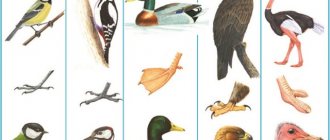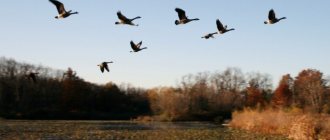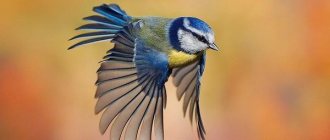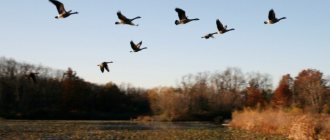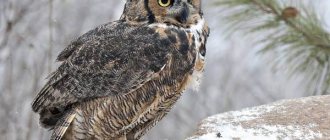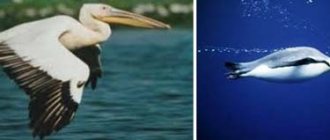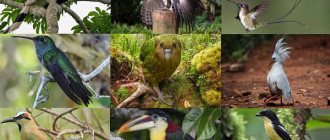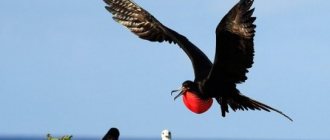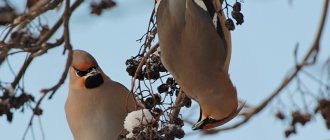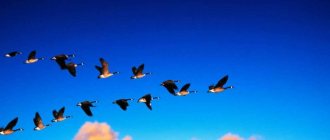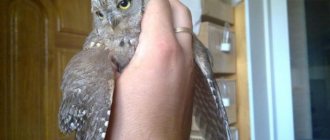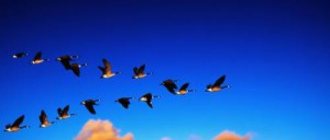How do ornithologists study birds and their migration?
Bird ringing is one of the methods used to study them. Scientists place a small, individually numbered metal or plastic ring on the bird's leg or wing. They also use special nets known as mystic nets as a way of capturing wild birds for research.
This way, birders can capture the same bird multiple times, measure and weigh it, and collect other important information over long periods of time. Sometimes scientists use satellite data to track bird migration routes.
Sensational discovery!
However, on May 21, 1822, a sensation spread around the world! Near Mecklenburg, Germany, an 80-centimeter arrow was found in the body of a dead stork, piercing the bird’s neck. The arrow was not from here and belonged to one of the African tribes. A desperate brave man with an arrow in his throat managed to overcome the entire migration route, returning home from the equatorial wintering grounds.
This story shed light on the mysterious disappearance of birds in winter. A stuffed specimen of the famous arrow stork can still be seen in the zoological collection of the University of Rostock.
Repeated reports of white storks with African arrows in their bodies helped make the discovery: European birds winter in equatorial Africa. However, ringing, which naturalists began to carry out since the 90s of the 19th century, made it possible to accurately determine the places where birds fly to for the winter.
Why do birds come back?
Migratory flock landing
in the southern regions, the birds find adequate nutrition and can survive the winter. But what drives them back, because they could stay there forever? It turns out that this moment is associated with reproduction, as in fish. As the breeding season approaches, the birds' bodies begin to produce the corresponding hormones and other active substances, and with an increase in their volume in the blood, the birds return to the place where they themselves were once born. They fly to the north to give birth to a new generation, which by autumn will fly south with their parents, and then return home to the north.
Interesting exceptions
But, by the way, not everyone exchanges cold habitats for warm ones. For example, the Arctic tern. An amazing bird: it nests in the North, living in Alaska, Siberia and Canada, even in Greenland. But she prefers to spend the winter in the same cold latitudes, so every year she flies to the other side of the world, to the shores of Antarctica. In a year, just for seasonal migration, the tern flies up to 70 thousand kilometers, and a one-way journey takes about a month. But the bird can boast that it sees two summers in one year: Arctic and Antarctic.
Arctic tern
It must be said that birds usually limit themselves to a much more modest scale of migration. Here is the black silky waxwing that lives in the Americas: Mexico and the United States, although some individuals have been spotted in Canada.
Black silky waxwing
Who flies off first
The species that feed on insects are the first to fly to warmer climes. Swifts already fly south in September, because they fly high and catch insects there. As you know, in such conditions food disappears faster, since it is much colder at altitude. The swift prefers to winter in Africa or in southern India, where there are all conditions for wintering insectivores.
Immediately after the swifts, swallows fly south, passing the sea, the Sahara Desert and stopping in southern Africa. They feed on dragonflies, which they catch on the fly.
Read also: How to reset geolocation from Android
These insects die in cold temperatures or hide in shelters. As a result, swallows have nothing to eat, and they have to form flocks and go to more suitable regions. They certainly arrive in their native region in March.
What controls bird migration?
The swan remained for the winter
. It is still unknown what exactly is involved in the mechanism of birds migrating south. Many researchers believe that this mechanism is triggered by decreasing daylight hours, but this information has not been proven. In any case, this is a vital mechanism, since migratory birds would not be able to survive the winter if they remained in the north. Individuals with damaged wings, unable to travel south, survive only with the help of humans.
Interesting: Why don't sand dunes crumble?
The same birds that were unable to fly from south to north successfully survive the period of absence of their fellow birds, but for the most part they cannot take part in breeding. In order to find a mate and lay a clutch, the bird must return to places familiar to it, where it returns every year. Many birds that choose a partner for life fly in pairs, but as part of a large flock.
Flock flights are safer, and the wedge-shaped structure allows you to save energy due to the aerodynamic properties of such a structure. The leading bird is the leader, it is the strongest, it experiences the maximum air resistance, it seems to “cut out” the air space for the rest of the individuals. The leader is periodically replaced by other strong, healthy individuals. Those in the middle and end of the wedge bear less of the load.
Thus, birds leave their northern homeland so as not to be left without food during the winter. They return in order to breed offspring. Many of these mechanisms still remain a mystery to scientists who observe bird migrations and behavior. There is still a lot of debate among ornithologists about this issue.
Why do birds migrate?
Many birds seek out places that are warm, have an abundance of food, and have the opportunity to breed and protect themselves from predators. In the Southern Hemisphere, especially in the tropics, the climate is warm enough that birds can find ample food throughout the year. Steady daylight gives them plenty of time to eat every day, so they don't have to fly off to find food.
Conditions in the countries of the Northern Hemisphere, for example, in Belarus, Russia, Ukraine, etc., are different. During the long days of the northern summer, birds have more time to feed their chicks with abundant insect populations. But as the days shorten in the fall and food supplies become scarce, some birds migrate south to so-called “warmer climes.” However, not all birds migrate. There are species that manage to survive winter by remaining in the Northern Hemisphere. For example, pigeons, crows and blackbirds remain in their native habitat all year round.
Groups of birds by flight distance:
- Residents are non-migratory birds that remain in their homeland all year round.
- Nomadic birds are birds that leave their nesting areas and are able to move short distances.
- Migratory birds are birds that fly south, to warmer regions, in winter.
Are we flying far?
Regardless of the reasons behind bird migrations, there is no doubt that birds are the most active travelers in the animal kingdom. Well, if you try to find a champion, among champions, then it will be the Arctic terns. In just one year, during their flights, they cover a distance of approximately 22,000 (this is not a mistake: twenty-two thousand!) miles.
Bird migrations always capture the spirit and imagination.
Terns nest in vast areas, from the American state of Massachusetts to the Arctic Circle. These birds fly to the Arctic in about twenty weeks, covering about a thousand miles every week.
The majority of birds make fairly short flights during migration.
American golden plovers make long, non-stop flights over ocean space. This bird can fly from Nova Scotia, Canada to South America, covering 2,400 miles of water without stopping.
Birds remaining for the winter
Not all birds are considered migratory. There is a group of sedentary birds. That is, they have adapted quite well to living in urban environments. They are accustomed to living close to people, and they often feed them. People build special feeders and pour food into them. Birds living in the forest and eating larvae and beetles that hide under tree bark, and the berries of wild shrubs, can easily survive the winter in cold weather. At this time they will be able to find food for themselves.
The well-known crows, tits, wood grouse, jays, and sparrows are usually classified as sedentary birds. Some of them can also find food in trash cans - landfills and in bins, that is, they do not hesitate to eat waste.
Read also: Why jump rope
Crossbills are also considered sedentary bird species. He has adapted to the cold so much that he even manages to build nests and hatch chicks in winter.
Is it only the cold that stimulates flights?
Bird fluff
Many people are sure that birds fly away because of the cold. Indeed, in the fall, temperatures drop rapidly, and people have to take warm clothes out of their closets. But do birds really freeze? This point is very doubtful, since the plumage of the vast majority of them is very warm. Even a domestic parrot is quite capable of enduring the winter cold. And large individuals, the same cranes that leave the northern latitudes in beautiful wedges, should not freeze at all. Under the feathers of each bird there is a layer of down, which provides reliable thermal insulation even at temperatures of -45 degrees. What drives them to fly?
Interesting: Mandarin duck - where it lives, description, nutrition, reproduction, photos and videos
Wintering frog
The situation becomes clearer if you take a closer look at the diet of migratory birds and their non-migratory counterparts. Wintering is easily tolerated by omnivorous birds, which easily find food for themselves in any season, especially near humans. Sparrows, crows, pigeons - they can all find enough food for themselves. If we consider storks and cranes, with the arrival of cold weather they lose access to food. The ponds freeze, they cannot hunt frogs and lizards. Insectivorous birds are also left without food - in winter, insects disappear, some of them die, others hibernate.
